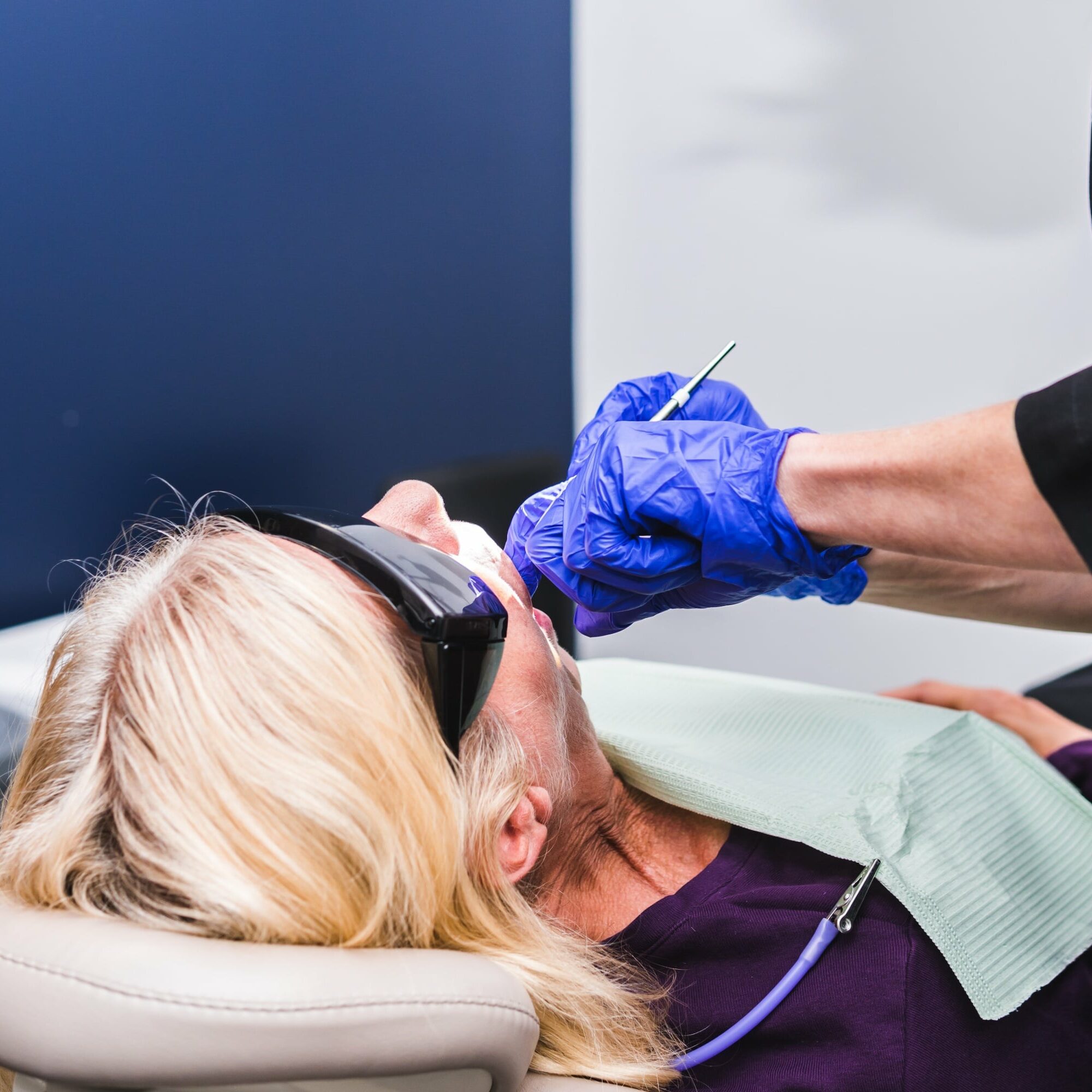Removing a tooth can be the first step you take towards recovering your oral health. But it’s not a step we take lightly—a tooth would have to be very seriously infected before we would recommend this procedure to you. Luckily, we also offer dental implants, bridges and partial or full dentures to replace infected teeth and restore your natural smile.
The important thing is that you shouldn’t continue to suffer in silence. If you’re even thinking about a tooth extraction, there’s probably a cavity or damage to your teeth. We invite you to come in and let us examine the situation and recommend a course of treatment.

Reasons for tooth extraction
If your dentist is considering extracting one or more of your teeth, it’s often for one of theses reasons.
- Severe tooth decay.
Unfortunately, some people are unable to visit their dentist regularly, and any dental infections go beyond the stage where we would fill a cavity, or perform a root canal. We can’t stress enough the importance of regular checkups to avoid getting to this point. - Impacted wisdom teeth.
Many young adults end up needing their wisdom teeth removed, as partially emerged teeth can cause a number of problems. You can read more about wisdom teeth removal here. - Gum disease.
Gum disease can be just as destructive as tooth decay. In the severe form of gum disease, called periodontitis, gum and bone loss may loosen teeth, and it may be safer to pull it and start with restorative treatments. - Damage to the tooth.
If you’ve experienced a severe crack or have had part of a tooth knocked out in an accident, we may need to remove the tooth. - Overcrowding.
People come in all shapes and sizes, and with some of us, our jaws are too small for the number of teeth we have, or the size of our teeth. Removing teeth helps prevent overcrowding and misalignment of the teeth.
What to expect when a tooth is pulled
Modern tooth extractions are safe and often painless. Before going ahead with the procedure, it’s important to discuss any existing health conditions you may have with your dentist, so she can tailor the treatment to your needs.
There are two types of extractions: simple extractions and surgical extractions. In a simple extraction, the tooth can be secured from above the gum line. In a surgical extraction, the tooth or remainder of the tooth is below the gum line.
Here’s an overview of the process:
- In certain circumstances, we take a small sample of your blood to extract platelet rich fibrin (PRF) and platelet rich plasma (PRP). This will help you heal faster.
- Your dentist will give you a local anaesthetic to numb the area. If you ask for dental sedation, we have several options.
- In simple extractions, your dentist may loosen the tooth with a tool called an elevator, and then will use dental forceps to pull the tooth.
- In surgical extractions, your dentist will need to make an incision to get to the tooth.
- If needed, dissolvable stitches will be used to close the incision.
From there, you may proceed to getting a dental implant to replace the tooth, if that’s the decision you’ve made.
What’s the best way to heal after a tooth extraction?
Healing after a tooth removal is mostly about keeping the area clean and giving your body time to heal.
- Use a gauze pad and change it every 30 minutes or so for at least an hour. Contact us if the bleeding doesn’t slow down.
- Avoid vigorous exercise for the first few days, and keep your head in an elevated position.
- Avoid eating solid foods for the first few days. Healthy, soft foods like yogurt, smoothies, and applesauce are ideal. When drinking liquids, use a straw but avoid sucking too hard, as that may loosen any clotted tissue, which is the first step towards healing.
- Continue to brush and floss your teeth, taking care to avoid the extraction area.
We may provide you with other steps to take, and following them will help you heal even faster.